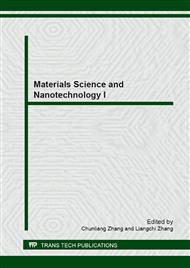p.429
p.437
p.442
p.446
p.450
p.454
p.458
p.465
p.469
The Comprehensive, Effective Purification Strategy of Carbon Nanotubes
Abstract:
It is known that the high purity of carbon nanotubes (CNTs) are hard to obtain because of the impurities, which directly affect their unique properties and potential applications. Some modern purification methods including physical separation methods and chemical oxidation methods have been developed for getting the CNTs. But either way, each method still has some deficiencies, such as structure damaged, complex steps and low yield. Now there is a comprehensive multi-step method to overcome this predicament, it combines the air oxidation, hydrochloric acid treatment, SDS dispersion, centrifugation process, mixed acid oxidation and H2O2 oxidation. In this paper, the whole procedures of comprehensive methods are discussed in detail.
Info:
Periodical:
Pages:
450-453
Citation:
Online since:
December 2012
Authors:
Price:
Сopyright:
© 2013 Trans Tech Publications Ltd. All Rights Reserved
Share:
Citation:


